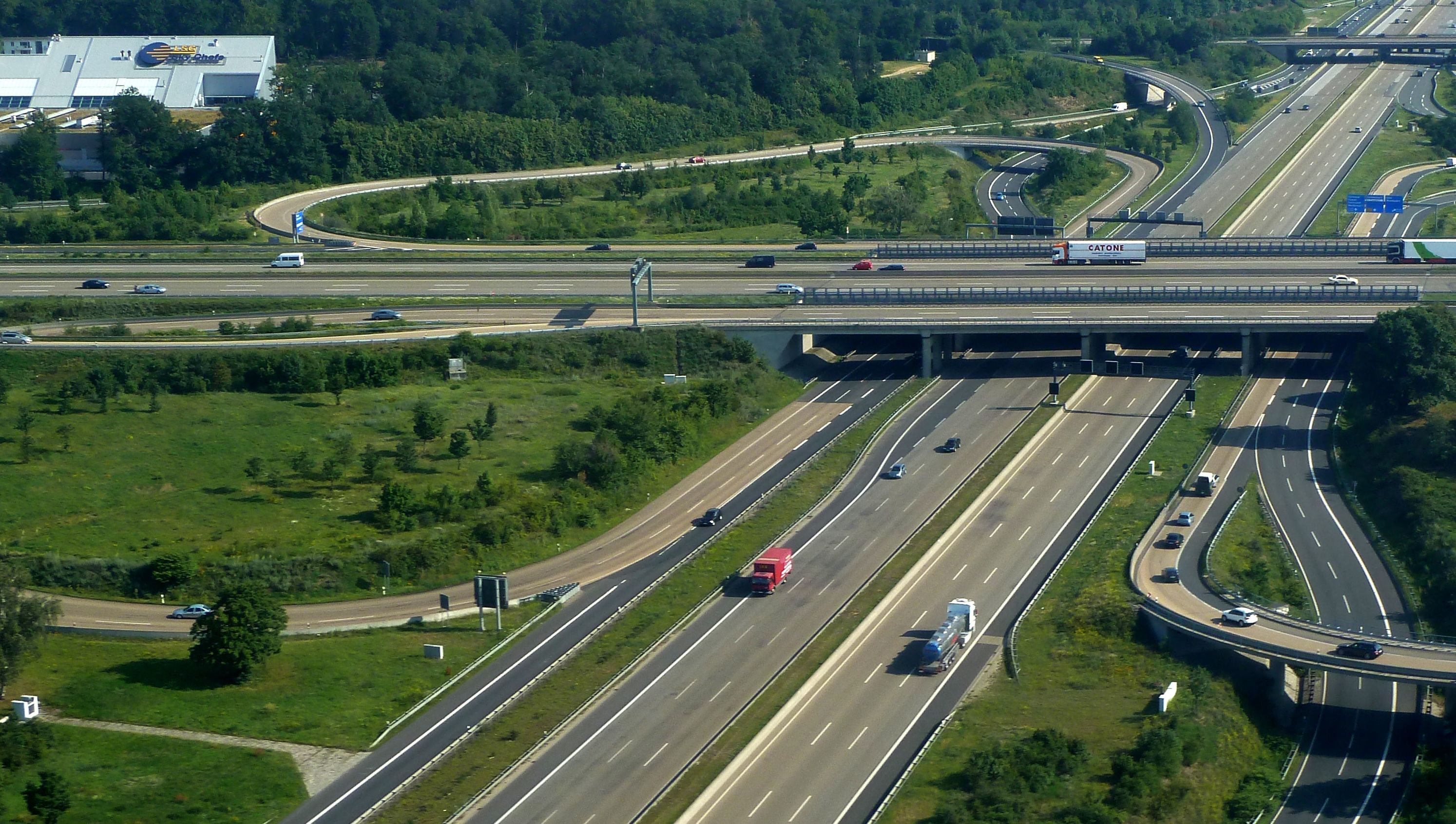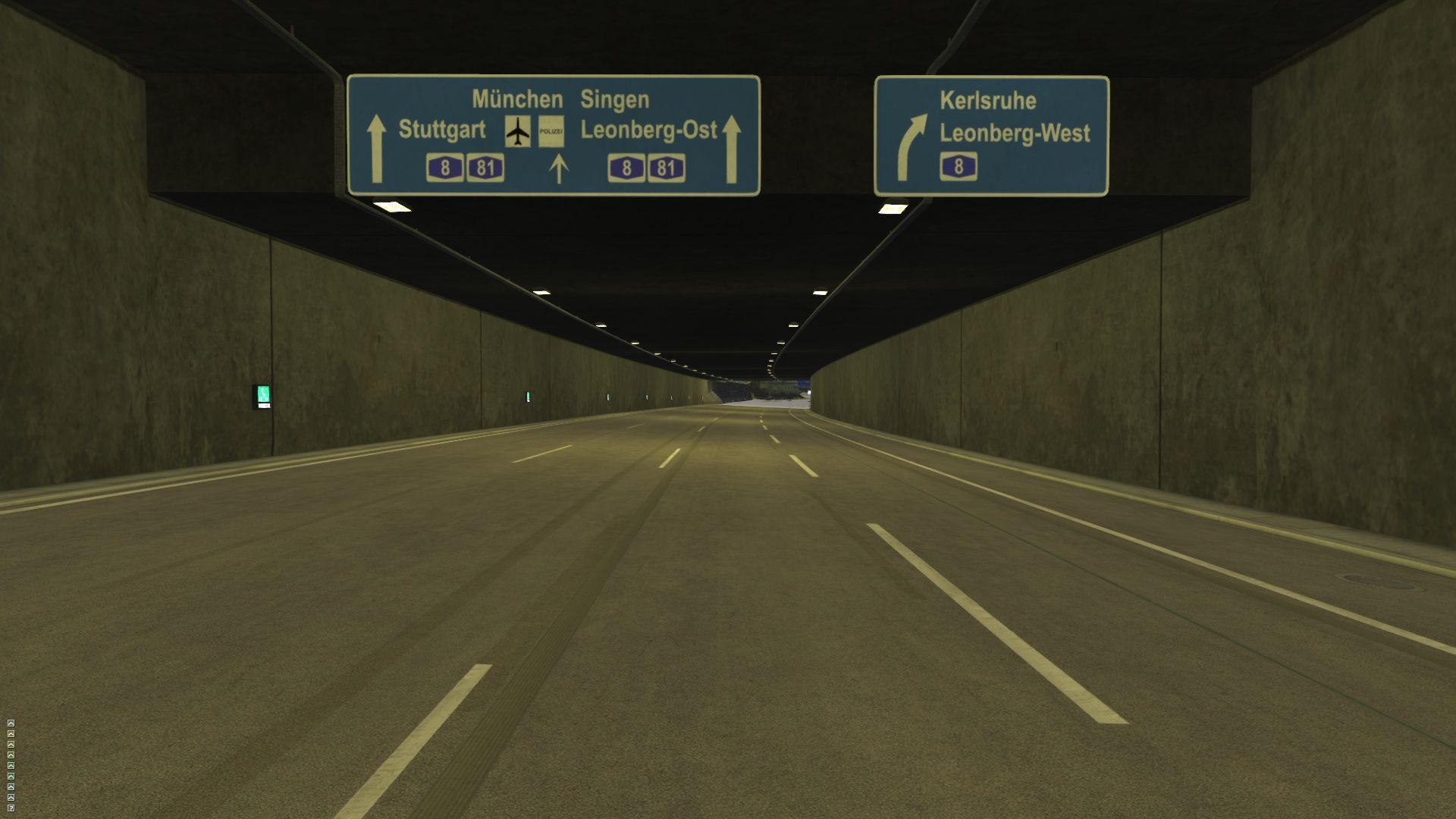If we are to believe some recent developments coming from Germany, the days of the no-limit sections of the famed Autobahn highway system might be numbered. However, there is an initiative for a new way to reduce emissions in California: by adding extra lanes with no speed limit imposed on two major strips of highway. We're intrigued!
You'll have a field day on the internet if you start searching for video of people going amok on Germany's Autobahn. That's because Germany's Autobahns, while no more the Nirvana of fast driving they once were, still offer many strips of highway devoid of speed limits where each and every one of us can go and test the limits of our rides. Those with faster cars are usually inclined to film their top speed attempts on the public roads, and that's how you get thousands of videos of fast Porsches, Ferraris, BMWs and anything in between blitzing towards the German horizon at ludicrous velocity - while still staying away from the effects of the law.
In the near future, we might see similar videos emerge from motorists in California if Senate Bill 319 passes. Why? Well, here's what the bill's text says: It "requires the department to initiate a project to construct two additional traffic lanes on northbound and southbound Interstate Route 5 and State Route 99, and would prohibit the imposition of a maximum speed limit for those traffic lanes." Let's dig in further.
Cue Videos of Folks Pushing their Priuses to the Absolute Limit
The bill is Moorlach's answer to the overcrowded Californian highways and comes as a way to reduce bumper-to-bumper situations and, overall, fluidify congestion. It's also an answer to the slow-moving bullet train system that was supposed to take people off the roads and put them in high-speed trains that would shorten their commutes. Jalopnik quoted the Sacramento Bee that reported from Governor Gavin Newsom's address at the State of the State address last week. There, he said that "the state’s high-speed rail project, which has ballooned in price from $45 billion to $77 billion, is out of control and needs trimming." Apparently, plans to connect the Bay Area have been ditched for the time being and the Governor is now focusing on the line through Silicon Valley from Merced to Bakersfield that would stretch 171 miles when finished, in 2027.
So, with at least seven years separating Californians from the high-tech rail system, Moorlach wants the state’s Greenhouse Gas Reduction Fund to back the introduction of two, separate, lanes on northbound and southbound Interstate Route 5 and State Route 99. According to the bill's text, "existing law continuously appropriates 35% of the annual proceeds of the fund for transit, affordable housing, and sustainable communities programs and 25% of the annual proceeds of the fund for certain components of a specified high-speed rail project."
“If Sacramento is serious about allowing Californians to travel between Los Angeles and the Bay Area, and High-Speed Rail will take too long to build, let’s construct four additional lanes with no maximum speed limit to provide for high speed on a safe road,” stated Senator Moorlach in a press release. He also points out on his blog that the current law, which states that "a person who drives a vehicle upon a highway at a speed greater than 100 miles per hour is guilty of an infraction" would exclude the high-speed lanes from the area of application of
this rule.
Naturally, I'm asking myself if this can actually be done in a safe way and, also, if it's actually a genuine avenue to reduce both congestion and pollution.
The National Platform on the Future of Mobility is, according to MNN, preparing to put forth a bill that would introduce speed limits across Germany's entire highway system. Currently, there are speed limits in certain areas according to the amount of traffic in the said areas, and there are also limits imposed at different hours of the day.
With this being said, there are still multiple strips of the Autobahn that remain unrestricted, and that means you can go as fast as you can, although the density of trucks and semis makes it tough to blast through the country like you once could. Officially, "just over half of the Autobahn network has a non-enforced advisory speed limit of 81 mph". The longest unrestricted stretch of highway is the A24 that links Berlin to Hamburg, and 65% of those 147 miles can be traveled at a speed as high as you dare or as high as the car can go.
The idea of speed limits on all of Germany's highways comes at a time when Europe is struggling to meet the tough emission reduction targets established by the Paris accord, of which the U.S. is no longer a part. Still, it's interesting to see how Stateside, there's a bill that suggests greenhouse emissions would be reduced by a lack of speed limit while in the land of unbridled speed, there are people looking into ways to reduce pollution by doing the opposite thing. Indeed, even Germany's Minister of Transport, Andreas Scheuer, argued that such an idea "goes against all common sense."
According to Deutsche Welle, vehicles roaming Germany's roads let out 115 million tons of carbon dioxide in 2017, 6.5% up from 2010. If that seems like a lot to you, The Guardian was reporting two years ago that, in 2016, vehicles in the U.S. produced a whopping 1.9 billion tons of carbon dioxide, up by 2% compared to 2015. The same article quotes Brett Smith, Assistant Director of the Center for Automotive Research: “In the automotive sector, there isn’t the same push. There are certainly Americans concerned about global warming, but people are driving bigger and bigger vehicles each year. It’s not a priority for them. The cost of fuel is pretty cheap, and at the moment there isn’t a better option out there than the internal combustion engine.”
The situation is similar in Germany, although at a smaller scale, as per a World Crunch article: "German carmakers earn most of their money with large, heavy, powerful cars," the author says while also adding that "for companies, speeding on the highways is invaluable publicity, admired all over the world." Also, while it seems to be true that a larger percentage of people die on the stretches of highway that have o speed limits, according to a 10-year-old report by the European Transport Safety Council that found that out "of the 645 road deaths in Germany in 2006, 67% occurred on motorway sections without limits and 33% on stretches with a permanent limit." Still, more people die on rural B roads than on the big highways.
At the end of the day, the topic is a tough one to swallow for the Germans as 50% of them are still against a blanket speed limit on the Autobahn according to The Independent. The British news outlet, however, also quotes Dorothee Saar, of Deutsche Umwelthilfe, who said that this measure is "the most impactful" while also costing nothing. "An autobahn speed limit of 75 mph, could cover a fifth of the gap to reach the 2020 goals for the transport sector, environmental experts say," reported the same source.
This opinion is echoed by the European Environmental Agency (EEA) which said that "cutting motorway speed limits from 75 to 68 mph could deliver fuel savings for current technology passenger cars of 12-18%, assuming smooth driving and 100 % compliance with speed limits. However, relaxing these assumptions to a more realistic setting implies a saving of just 2-3%." The same Agency also states that "the benefits of reducing average speed from 62 mph to 56 mph range from 25% (gas carbon dioxide) to 5% (diesel PM). Crucially, decreasing speed reduces the two pollutants currently most important in Europe: diesel NOx and PM." The German Federal Environment Agency, through the voice of its President, Andreas Troge, shares similar sentiments as he said that by enforcing a nation-wide 75 mph speed limit on the Autobahn, emissions could drop by upwards of 30%.
This is a fact acknowledged by the Insurance Institute for Highway Safety that responded to an inquiry made by Jalopnik saying that "there are important differences besides speed that make driving in the U.S. more hazardous than in Germany. A big difference is that traffic safety laws are often more strictly enforced in Europe. Belt use is higher, the minimum licensing age is higher, where speed limits are in place, automated enforcement is used widely, and with extensive networks of public transit and drinking and driving is less of a problem." The same organization said that the bill is "dangerous to the extreme."
It's clear that decision-makers have to find ways to reduce both pollution and congestion but, maybe, higher speeds - or no speed limit at all - may not be the answer in the U.S. Maybe, tougher driving tests can be the answer and better policing of the rules and laws of driving could end up lessen the effects of congestion more as drivers become more aware of what they're supposed to do behind the wheel to not only keep themselves out of harm's way but also drive in such a way as not to be the cause of bumper-to-bumper idle driving themselves.
Further reading
Climate Change Plans in Germany Could have a Dire Effect on the Autobahn



